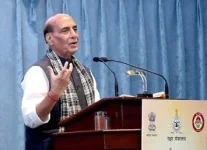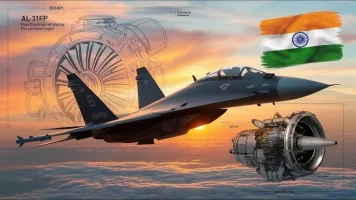- Views: 2K
- Replies: 5
The Ministry of Defence (MoD) has appointed the global management consulting firm Boston Consulting Group (BCG) to formulate a sweeping restructuring plan for Hindustan Aeronautics Limited (HAL) by March 2026.
This move comes as India’s premier aerospace major and newest Maharatna PSU struggles to manage an unprecedented order book of ₹2.52 lakh crore, which has severely strained its existing production infrastructure.
According to defence sources, BCG was formally engaged in September 2025 with a clear mandate: to transform HAL from a traditional licence-production entity into a competitive, modern aerospace lead integrator.
The restructuring is viewed as the most significant organisational overhaul since the company’s inception in 1964.
A Crisis of Plenty
The primary driver for this intervention is HAL’s massive order backlog, which now stands at eight times its FY25 turnover of ₹30,105 crore.While the company has secured landmark contracts—including the ₹36,400 crore deal for 83 Tejas Mk1A fighters signed in 2021 and the ₹62,700 crore contract for 156 Prachand Light Combat Helicopters signed in March 2025—execution has lagged.
Despite operating nine manufacturing divisions across locations such as Bengaluru, Nashik, and Koraput, the current structure has proven inadequate for the workload.
Critical programmes are facing delays, most notably the Tejas Mk1A, where deliveries are behind schedule. Additionally, the company is managing simultaneous production lines for the ALH Dhruv, Do-228 civil aircraft, and the massive undertaking of manufacturing 240 indigenous engines for the Su-30MKI fleet.
“The mandate given to BCG is not to privatise or break up the entity,” a senior official from the Department of Defence Production clarified. “The objective is to enable HAL to deliver faster, improve customer responsiveness, and remain competitive as private sector players prepare to enter combat aircraft manufacturing.”
Proposed Structural Changes
While the final report is due in four months, preliminary discussions suggest a radical shift from HAL’s current geography-based divisions to product-specific verticals.The proposed changes include:
- Platform-Based Profit Centres: Reorganising divisions into specialised verticals for Fighters, Helicopters, Engines, Transport Aircraft, and Upgrades, rather than the current location-based management.
- Strategic Outsourcing: A major push to offload structural sub-assemblies to private Tier-1 partners such as Tata Advanced Systems, Mahindra Defence, and Bharat Forge, allowing HAL to focus on final integration and testing.
- Combat Aircraft Division: Creating a dedicated, ring-fenced division for fighter jets to ensure focused execution for the upcoming Advanced Medium Combat Aircraft (AMCA) programme.
- Financial Autonomy: empowering division heads with greater financial authority to expedite vendor payments and capital expenditure.
- Asset Monetisation: There are also discussions regarding the potential listing of the helicopter and transport divisions to raise fresh capital for expansion.
The Strategic Catalyst
The urgency for this restructure was reportedly triggered by the competitive tendering process for the AMCA prototype.The Aeronautical Development Agency (ADA) designed the scoring criteria to favour lean, efficient bidders, leading to a scenario where HAL—despite being the incumbent monopoly—faced technical disqualification risks based purely on its existing workload and efficiency metrics.
This served as a stark warning from the government: clear the production backlog and modernise operations, or risk losing exclusivity in future strategic projects.
Industry experts argue that this overhaul is existential.
“HAL will remain the backbone of Indian military aviation,” a defence analyst noted. “However, it cannot continue to operate like a 1960s licence-production factory when it is expected to deliver fifth-generation stealth fighters by 2035.”



